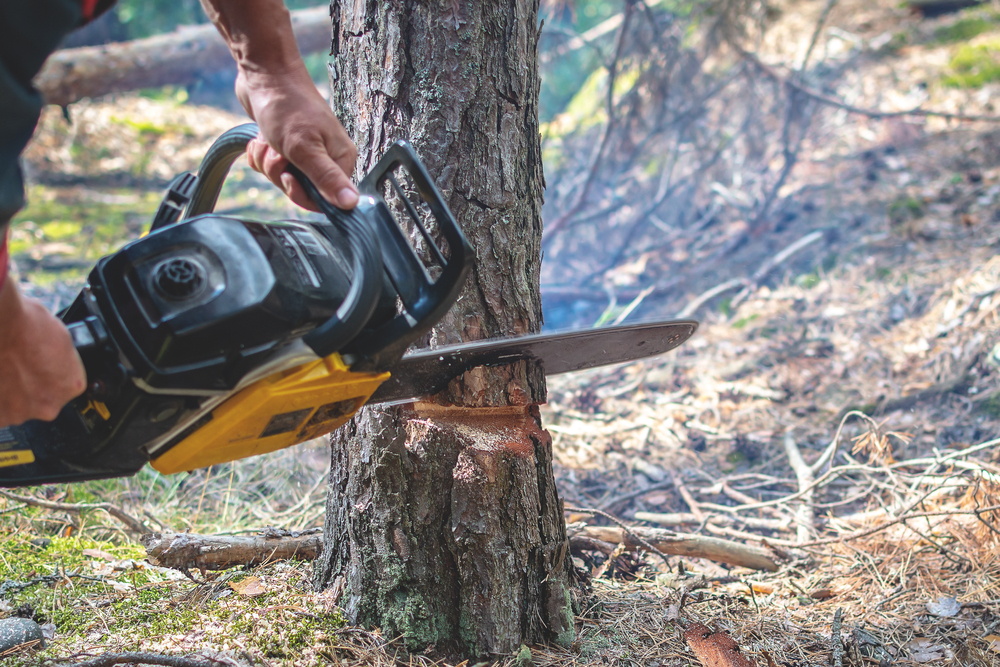When trees grow near power lines or structures, hazards that require careful consideration and expert handling arise. The proximity of trees to these elements demands a strategic approach to ensure safety and prevent disruptions. Understanding the risks associated with trees in such locations is crucial for effective management.
From tree maintenance techniques to specialized pruning methods, various ways to address this issue proactively exist. Stay tuned to discover the best practices and safety measures for handling trees near power lines or structures and safeguarding property and people from potential dangers.
Risks of Trees Near Power Lines
Numerous risks are associated with trees growing near power lines, posing serious safety hazards and potential disruptions to electrical services. One of the primary concerns is the risk of electrical hazards. When trees come into contact with power lines, it can create a dangerous situation where the tree becomes energized.
This poses a significant risk of electrocution to anyone in the vicinity and can lead to severe injuries or even fatalities. Moreover, the tree itself can suffer damage, potentially causing it to catch fire, further escalating the risk to nearby structures and individuals.
In addition to electrical hazards, trees near power lines threaten property damage. In the event of a tree branch falling onto a power line, it can result in power outages that impact homes, businesses, and essential services.
The branch’s weight and the electricity running through the line can lead to structural damage, fires, or even explosions. Property damage can extend beyond the immediate impact area, affecting a wider community and incurring substantial repair costs.
Proactive measures such as regular tree trimming and maintenance are essential to mitigate these risks. By addressing the potential dangers posed by trees near power lines, the safety of individuals and the reliability of electrical services can be upheld.
Importance of Tree Maintenance
Proactive tree maintenance is crucial for ensuring the safety and reliability of power lines and structures. Implementing preventative measures and following trimming guidelines can significantly reduce potential risks associated with trees close to power lines. Regular tree maintenance enhances the aesthetic appeal of the surroundings and plays a vital role in preventing potential hazards.
One of the key preventative measures in tree maintenance is regular trimming. Trees close to power lines or structures should be pruned regularly to control their growth and prevent branches from encroaching upon these sensitive areas. Trimming guidelines recommend maintaining a safe distance between trees and power lines to minimize the risk of contact and subsequent damage.
Additionally, tree maintenance involves inspecting trees for signs of disease, decay, or structural weakness. Identifying and addressing these issues promptly can prevent trees from falling onto power lines during adverse weather conditions, reducing the likelihood of power outages and property damage.
Safety Measures for Tree Removal
Safety during tree removal operations is paramount to prevent accidents and property damage. Safe practices must be followed to guarantee the well-being of both workers and bystanders. Before commencing any tree removal, conducting a thorough risk assessment is crucial to identify potential hazards and plan the safest approach. Proper equipment usage is also essential for ensuring a smooth and secure tree removal process.
Safe practices during tree removal include establishing clear work zones and keeping bystanders safe. Workers should be equipped with personal protective gear such as helmets, gloves, and eye protection. Additionally, all workers involved in tree removal operations should be adequately trained in safe tree-felling techniques to minimize risks.
Equipment usage plays a significant role in the safety of tree removal. Chainsaws, ropes, and rigging equipment should be inspected regularly to ensure they are in good working condition. Using the appropriate tools for the job and following manufacturer guidelines can prevent equipment malfunctions and accidents. Furthermore, employing proper rigging techniques when lowering branches and tree sections can prevent damage to surrounding structures and utility lines.
Pruning Techniques for Safety
Proper pruning techniques are essential for maintaining safety when working with trees near power lines or structures. Proper pruning helps to ensure that trees remain healthy, structurally sound, and less likely to pose a risk to nearby power lines or structures. Proper pruning maintains adequate clearance distances between tree limbs and power lines or buildings.
When pruning trees near power lines, following industry standards for clearance distances is crucial. For power lines, these distances are typically defined by regulations to prevent contact between trees and the lines. Failure to adhere to these clearance requirements can result in power outages, property damage, or even personal injury.
Proper pruning techniques also involve removing dead or diseased branches that could fall and cause harm. Thinning the tree’s crown can help reduce wind resistance and minimize the risk of branches breaking off during storms. Additionally, pruning can promote proper tree growth and structure, which is beneficial for the tree’s long-term health.

